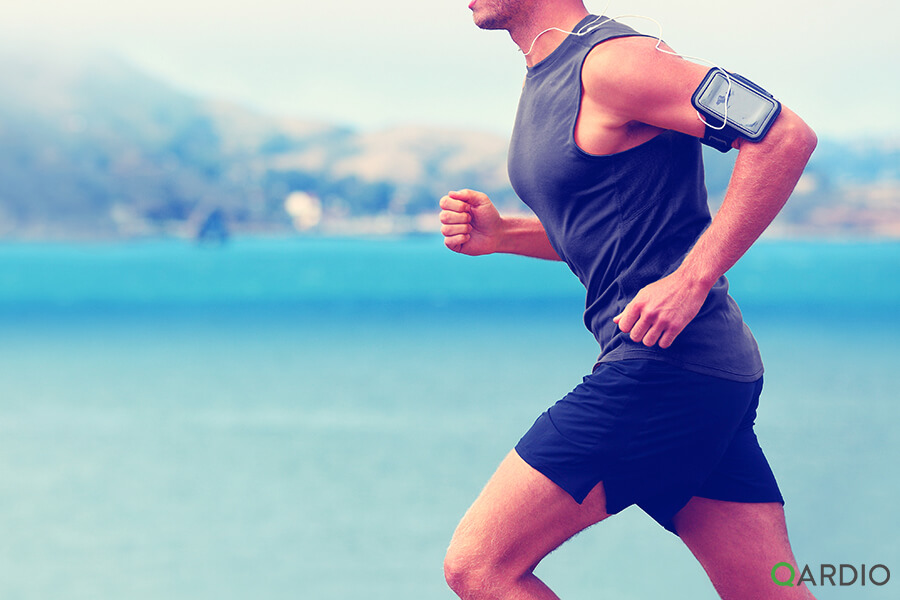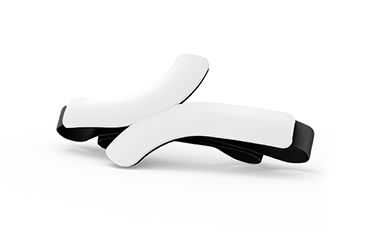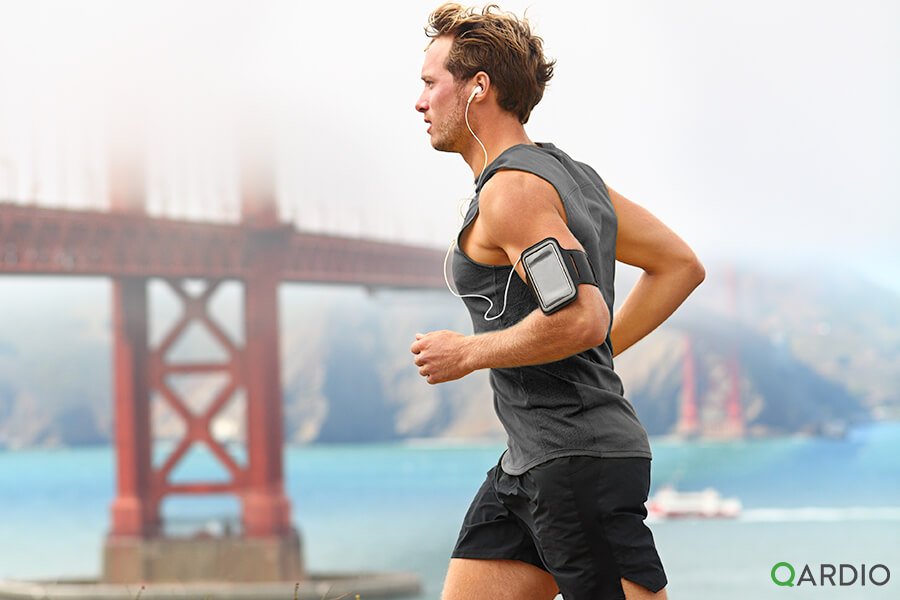The fitness industry is full of technical terminology for athletes, distinguishing between useful information and being distracted by unnecessary trends can be a challenge, but Heart Rate Variability (HRV) training should be in every athlete’s vocabulary. HRV unlocks high-level information that can be used to optimize performance and training for athletes of any level.
What is Heart Rate Variability and what information does it provide?
Heart Rate Variability (HRV) refers to the variable time between individual heartbeats. HRV can be accurately measured by an ECG. A basic heart rate monitor can also be used to provide this data, but the HRV will not be as accurate. In the past, only elite athletes and their coaches had access to HRV data because devices that measure ECG were extremely expensive and difficult to wear. Now, with accessible, wearable and user-friendly technology like QardioCore wearable ECG monitor, everyone from professional athletes to weekend warriors can use HRV data to enhance their training.
By providing a unique look into nervous system activity, HRV data allows athletes to strike the right balance between training and recovery. The Autonomic Nervous System (ANS)—further divided into sympathetic and parasympathetic system—directly influences HRV measurements. The sympathetic or “fight or flight” system raises an athlete’s heart rate, breathing, and muscle tension during training or competition. In contrast, the parasympathetic or “rest and digest” system decreases an athlete’s heart rate, relaxes muscles, and allows for digestion. Like the gas pedal and brakes on a car, both systems need to be in sync for an athlete to be at their best.
What is RMSDD?
In a hospital, most people have seen ECG values flowing across a screen like peaks and valleys. The peaks represent the heart’s peak electrical activity, signaling a contraction or beat. HRV focuses on the distance between peaks. In the Qardio App, the SDNN and RMSDD values both relate to the time-interval between peaks, but RMSDD best shows parasympathetic or “rest and digest” activity. Accurate RMSDD measurements can also be taken in 60 seconds or less, which makes RMSDD quick and easy.
How can RMSDD be used to calculate HRV and plan optimal athletic training?
As a training tool, the power of HRV comes from establishing an RMSDD baseline. To establish a baseline, an athlete simply needs to wake up, strap on the QardioCore wireless ECG monitor for a minute, and take a reading each day for one week. At the end of the week, if they average all of their RMSDD measurements, they will have a baseline RMSDD number. In the future, if their RMSDD numbers fall below their baseline in the morning, they will know to ease off on training for optimal performance. If their RMSDD number goes above their baseline, they are more than recovered and can take on a challenging workout. In other words, higher RMSDD numbers correspond with more parasympathetic activity or a more recovered state.
RMSDD and HRV let you know when and how to train
In a perfect world, an athlete’s mind and body would be in total sync, and athletes would intuitively know how hard to push themselves. In reality, athletes may start to gradually stop making progress without knowing exactly why. They are either over or under-training. They may attribute their fatigue to not working hard enough when, in fact, they are working too hard. HRV measurements like RMSDD give athletes an objective way to justify a rest day, or on the other end of the spectrum, prompt them to step down hard on the gas petal. HRV used to be available to only world-class athletes, but with technologies like QardioCore, HRV analysis can be used by cyclists, runners, endurance athletes of all kinds, and even gym enthusiasts.
QardioCore is a medical grade ECG/EKG monitor that continuously measures heart rate variability by tracking the time between R-R intervals. QardioCore offers everyday athletes an elite training tool. Discover how easy it is to learn about your heart health with QardioCore.
Post contributed by Allison Almanzar.
Source:
Training Peaks



